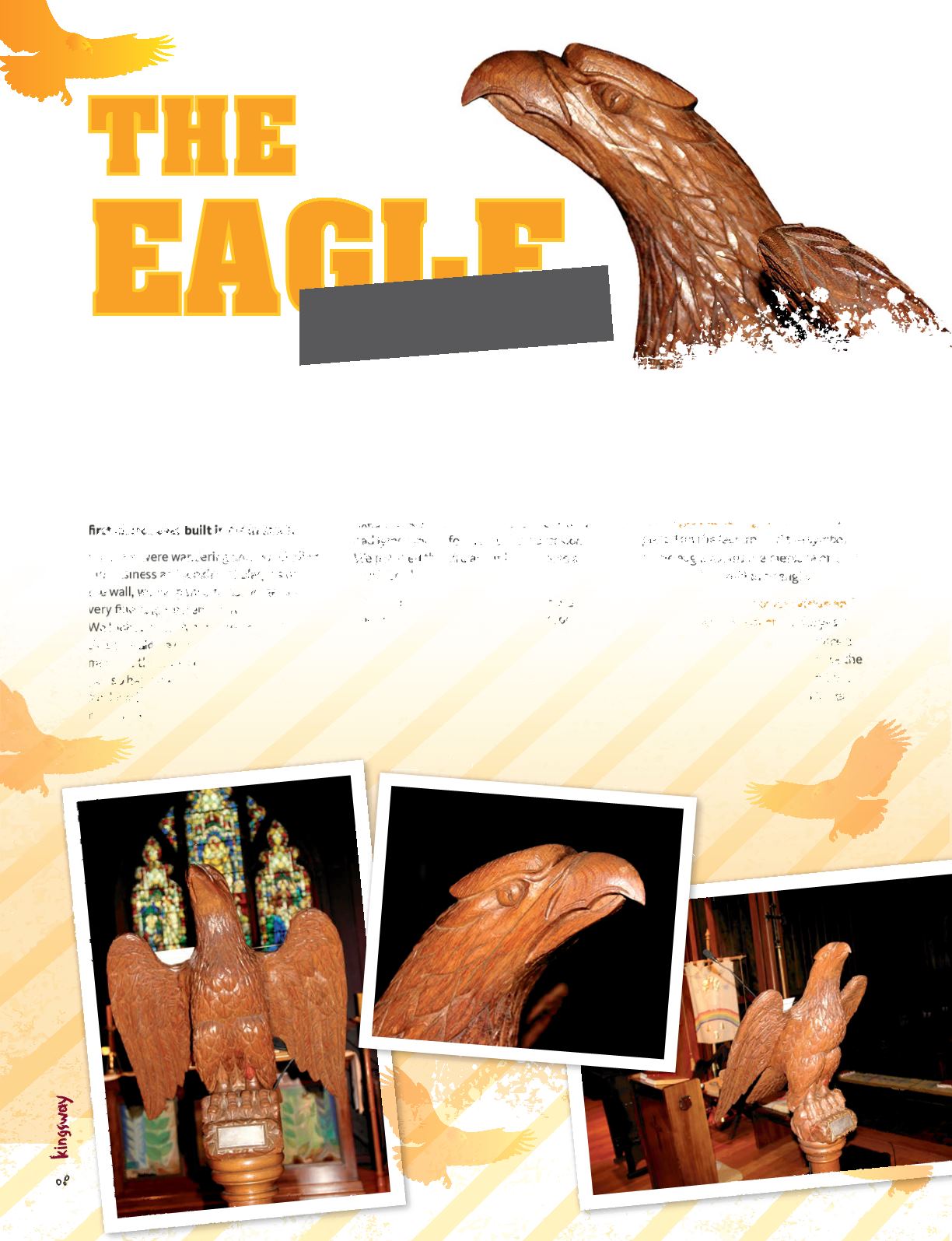
has landed
H
eadmaster and I were part of the
Anglican Schools’ Conference
in Northland, and the theme of
it was following in the steps of the early
missionaries. One of the places we went
to was the heartland of Henry Williams -
and we visited St Paul’s Anglican Church
in Paihia, erected on the site of the very
first church ever built in NZ in 1823.
While we were wandering around minding
our business and looking at plaques on
the wall, we happened to converge at the
very fine eagle lectern at the same time.
We looked at each other and said – “one of
these would be nice at King’s”. At that same
moment the Bishop joined us and told us it
just so happened that there was a church in
Auckland advertising an eagle lectern, and
he looked up the details on his iphone.
One thing led to another, and we contacted
the Church of St Saviour’s at Blockhouse Bay
and yes the lectern was still available. We
offered a sum and it was ours!
I went to pick up the eagle and found it had
been in storage for 13 years and was missing
a feather and part of its beak. Back at school,
Mr Forsyth carved the missing feather and
fixed the beak with an old piece of oak he’d
had lying around for just such an occasion!
We polished the bird and it has become a
much-stroked lectern.
On the front of the eagle is a silver plate
and the inscription has been worn through
years of polishing, but we managed to read
“To the glory of God, and in loving memory
of Jessie Sheffield”. Ms Sutherland in the
Archives did a lot of digging, and found out
that Jessie was married to a farmer, and we
now have her wedding details and the notice
of her death. The lectern was presented to
the church in 1923 by her husband,
and we like to think it was carved in 1922,
making it the same age as King’s School.
Why an eagle?
In churches of this period,
eagles became popular as lecterns. There
are at least 2 reasons why:
1.
The eagle has strength.
The Bible is
placed on the lectern, and the symbol
of the eagle means the message of God
goes into the world in strength.
2.
The eagle has the sharpest vision and
can see what we cannot.
In the years
of the early church the eagle became a
symbol for St John’s Gospel, because the
writer of that Gospel speaks about the
mystery of the incarnation, and looks
into the heart of God.
Fr. John Goodwin
08


